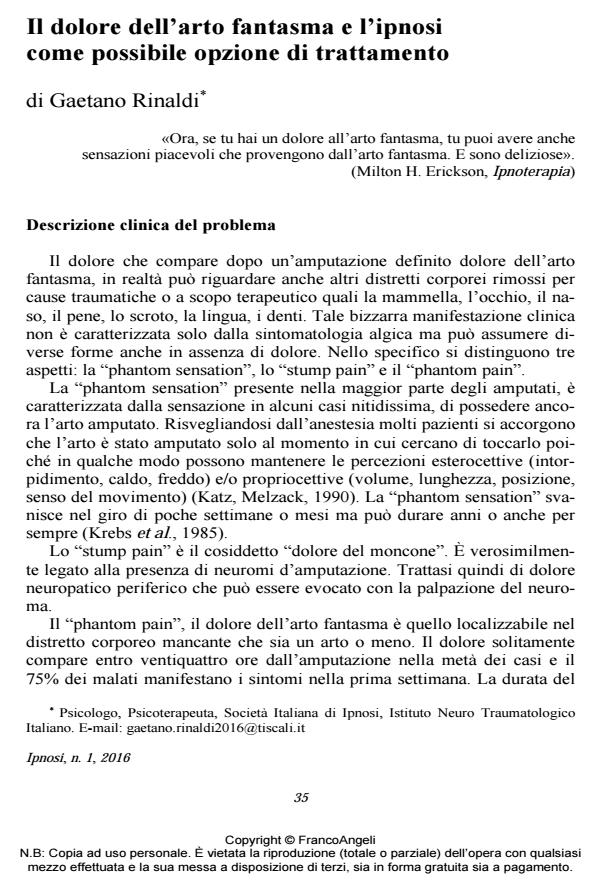Il dolore dell’arto fantasma e l’ipnosi come possibile opzione di trattamento
Journal title IPNOSI
Author/s Gaetano Rinaldi
Publishing Year 2016 Issue 2016/1
Language Italian Pages 12 P. 35-46 File size 211 KB
DOI 10.3280/IPN2016-001004
DOI is like a bar code for intellectual property: to have more infomation
click here
Below, you can see the article first page
If you want to buy this article in PDF format, you can do it, following the instructions to buy download credits

FrancoAngeli is member of Publishers International Linking Association, Inc (PILA), a not-for-profit association which run the CrossRef service enabling links to and from online scholarly content.
The phantom limb syndrome, in its different aspects, is in some ways to this day still a neurological mystery. The algic component of the problem has been treaded with physical procedures such as the mirror box eith promising results. Recently the trend is towards mind-body treatments which rest on new technologies apt to produce a virtual reality. The author of the article reports his therapeutic experience with a patient suffering from such a syndrome, through the use of an older but very current mind-body therapy: hypnosis.
La sindrome dell’arto fantasma nei suoi diversi aspetti rimane ad oggi per alcuni versi un mistero della neurologia. La componente algica del problema è stata trattata con procedure fisiche quali la mirror box con risultati promettenti. Recentemente ci si è orientati su trattamenti mente-corpo poggianti sulle nuove tecnologie atte a produrre una realtà virtuale. L’autore dell’articolo riporta la sua esperienza terapeutica con un paziente affetto da tale sindrome, condotta attraverso l’uso della terapia mente-corpo più antica, ma ancora di stretta attualità, l’ipnosi.
Keywords: Phantom limb, hypnosis, mirror box, virtual reality, pain, mind-body
Gaetano Rinaldi, Il dolore dell’arto fantasma e l’ipnosi come possibile opzione di trattamento in "IPNOSI" 1/2016, pp 35-46, DOI: 10.3280/IPN2016-001004